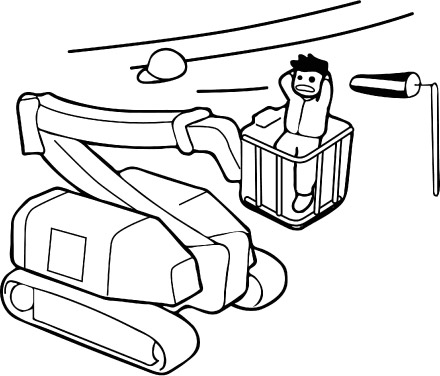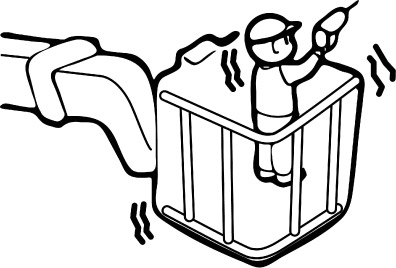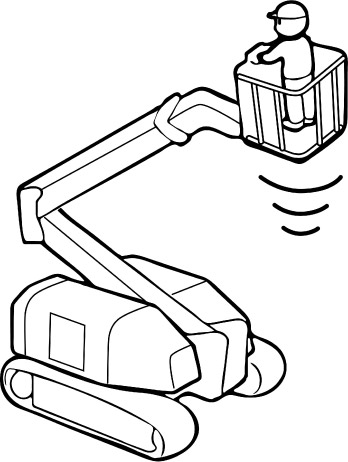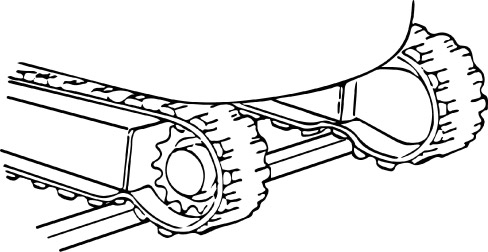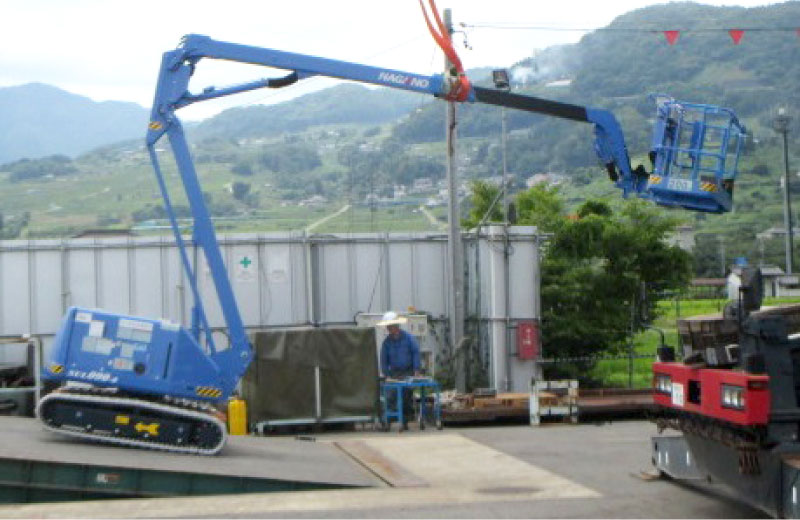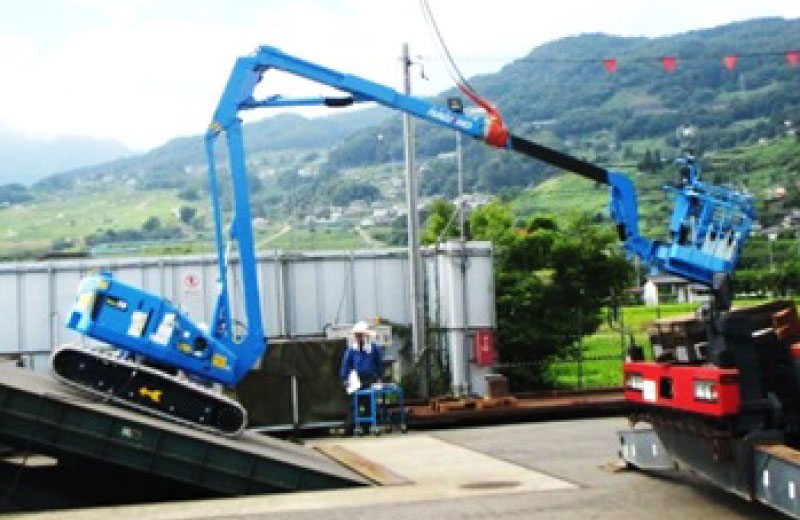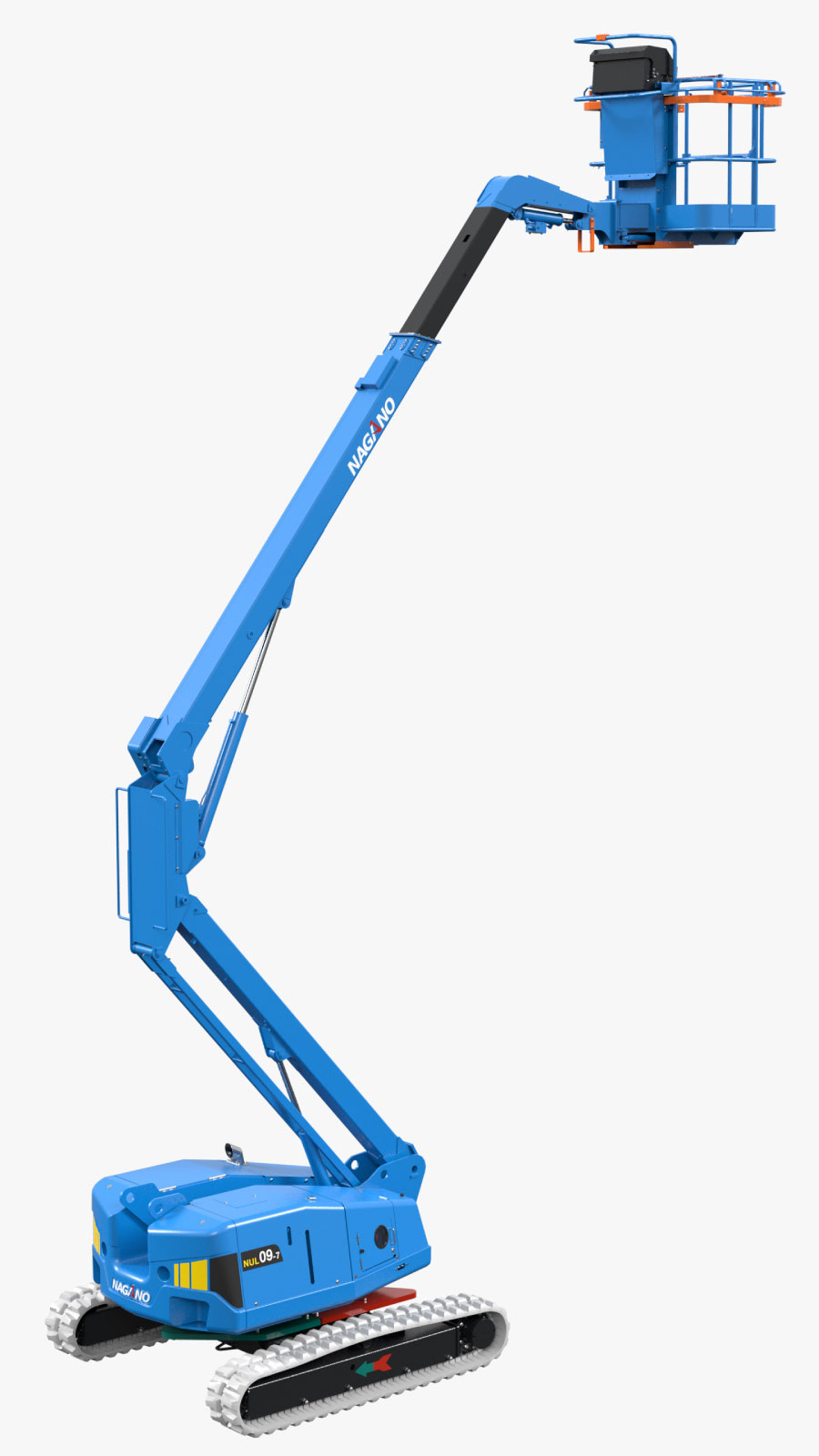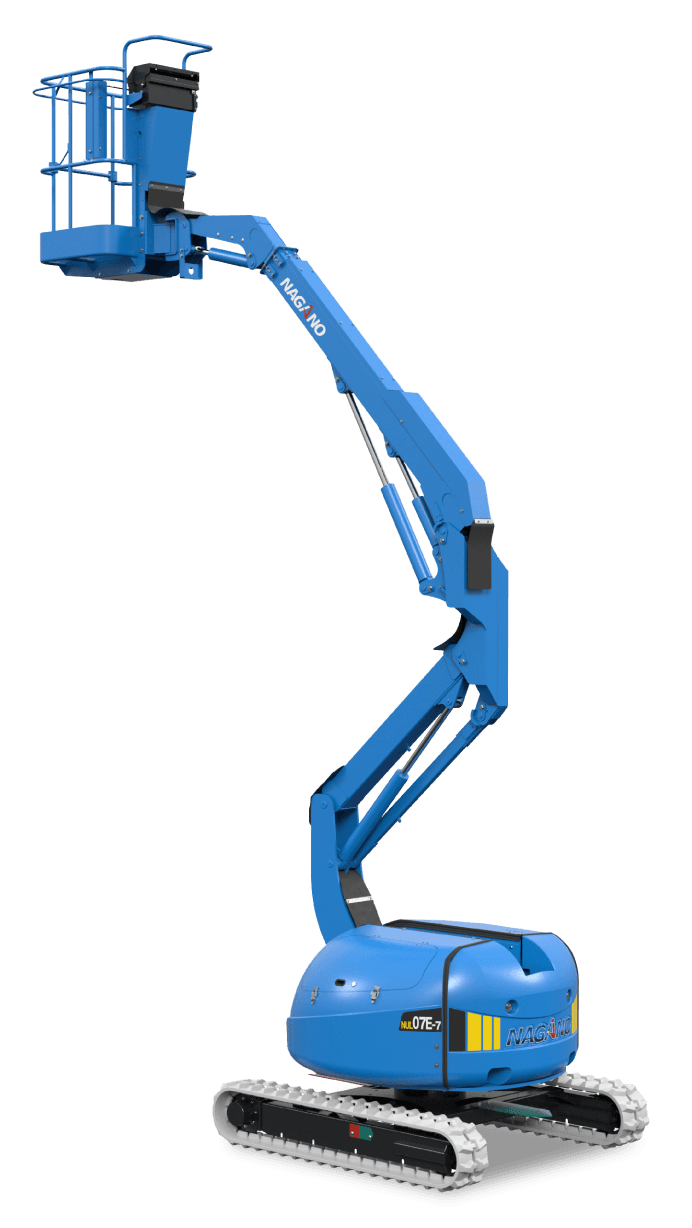Our First Electric Access:
Crawler-type articulated boom lift
-
Work 8 hours during daytime => Full recharge overnight
(Nagano standard operation pattern). - Equivalent operation and traveling to engine-powered machines.
- Reduced noise, low vibration, low heat emissions ⇒ Ideal for work in urban areas, underground, tunneling and indoor.


